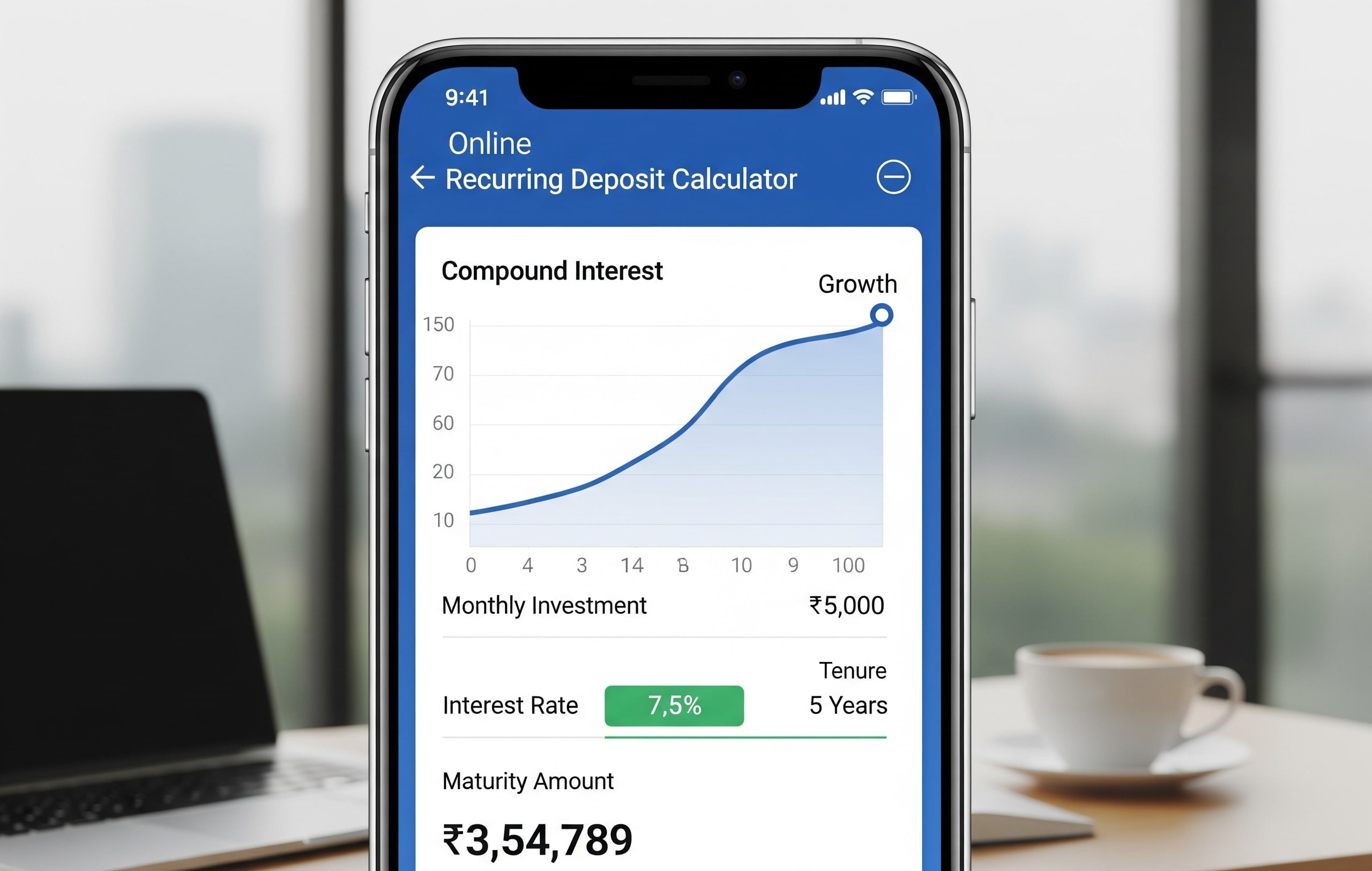In the current business world, there are large, medium and small business owners who strive to shape and boost their businesses’ growth. These business owners invest in mutual funds to enhance their businesses, aiming to grow ₹1000 into ₹1 crore through large-cap funds. The large cap definition India refers to investment funds that focus on larger companies with significant market capitalisation.
The companies in the top 100 ranks of the best companies list are larger firms with extensive market capital. In fact, those sectors work with large market stocks and funds to provide stable growth and participation in the business market. To learn more about large-cap funds, continue reading the content below.
What is a Large Cap Fund in India?
In India, large-cap companies invest predominantly in large-cap funds to grow their presence in financial markets. Large-cap funds have features like low volatility, reasonable tax payments and long-term wealth. This investment approach will lead to high performance across all businesses.
Furthermore, large-cap funds offer relatively stable returns to investors, making them suitable for long-term wealth creation. The large cap fund definition India is set by the Securities and Exchange Board of India. Companies that have large market capitalisations are likely to be financially stable, focusing on investment targets, potential returns, high liquidity, and consistent financial performance.
The Purpose of Investing in a Large Cap Fund
- Best for Financial Upliftment
Large-cap stock companies, such as Infosys, HDFC Bank, and TCS, are included among the top 100 largest companies. As they have stable capital flow and market strength, large-cap funds are ideal for financial objectives. This investment in large-cap funds boosts the confidence of the investors and relies on a debt-free procedure. Therefore, the purpose of investing in a large-cap fund fosters larger companies to hold stable long-term commitments.
- Diversification
There are larger companies that hold stocks across different sectors or places. Such investments will diversify the overall growth of the company. Diversity is based on location, sector, industry, style, and more.
Sector diversification includes finance, healthcare, education, and other fields; geographical diversification encompasses both domestic and international connections; and industries like technology, clothing, and oil or gas come under large-cap fund diversification. Therefore, the purpose of large-cap funds is to provide a wide range of sectors that boost growth across segments.
- Affordable Tax Payment
In India, the large-cap funds are taxed at 10% on long-term capital gains exceeding ₹1 lakh. This is a highly beneficial point for the investors in India. They establish reasonable taxation policies that promote optimal financial growth. It is also considered a strategic tax plan in India to bring equity, short-term gains, direct plans, long-term gains, and tax harvesting. The large cap fund meaning proves that it is stable and flexible with the help of these impactful uses.
- Long-term Savings
Essentially, investments represent long term savings that are guided by a creative plan and strategy. Businesses constantly implement investments to enhance their market capital at lower risk. Large-cap funds help us be financially stable and provide continuous performance. Moreover, the long-term savings in large-cap funds are highly liquid and offer flexibility in redeeming the money. Investing in large-cap funds is also very safe for implementing a systematic investment plan.
How Does a Large Cap Fund Work?
Companies ranked in the top 100 by market cap, typically exceeding several thousand crores, are considered large-cap by SEBI. Initially, the company establishes an investment target, forms a fund structure, analyses return policies, and calculates expense rates. Larger businesses also use these steps to track data, set ideal long-term goals, and strive for greater stability.
How to Invest in Large Cap Funds?
Common methods to invest in large-cap funds include straightforward investments, investing through mutual fund distributors, and consulting financial advisors.
- Direct Investment
Step 1: Understand the large-cap funds before selecting a fund from the bank.
Step 2: Choose a large-cap mutual fund from ICICI, HDFC, SBI or any of the other AMCs.
Step 3: Navigate to the web portal of your chosen bank.
Step 4: Collect the necessary documents, like identity proof, photos, address, etc.,
Step 5: Create an account in the desired bank, select the investment method and choose your payment mode.
Step 6: Your direct investment process is successfully completed. Now it’s time to monitor and track your investment growth on the website.
- Mutual Fund Distributor
Step 1: Select a professional and SEBI-registered mutual fund distributor and confirm their authority with their ARN reference number and online feedback.
Step 2: Ask for an appointment, book your consultation and complete your KYC (know your customer) verification.
Step 3: Go through the fund policies and choose your desired fund with the help of an advisor.
Step 4: Fill out the investment form and make your payment.
Step 5: Your distributor will provide reviews, and you can start monitoring your investment through the desired apps or website.
Core Benefits of a Large Cap Fund
- High Liquidity: A large-cap fund makes the buying and selling process more flexible with a high liquidity rate. The smooth conversion of stocks into cash enhances the liquidity rate. Moreover, the large-cap fund has low transaction costs and easy fund management with less volatility.
- Stability: With safer investment choices, large-cap companies manage all types of financial downturns. They have constant profits and potential returns without the risks that foster market capitalisation.
- Risk Mitigation: The large-cap companies use metrics, ratios, and tracking to manage their investments. While large-cap funds are less risky, they are not entirely risk-free. It is also important to choose certified fund managers to avoid risks.
Top 5 Features of Large Cap Funds and Their Benefits?
| Features | Large Cap Fund | Benefits |
| Volatility | Volatility is low in large cap fund | It aids in the purchase of premium stocks, provides long-term potential returns, and ensures stable management. |
| Liquidity | High Liquidity | Effortless entry and exit in investment |
| SEBI Certified/Registered | Registered with SEBI, a standard organisation | Provides trust and reliable investment service |
| Investment Period | The investment horizon is between 3 and 5 years. | Investing for 3–5 years offers consistent returns, reasonable taxes, and strong economic growth. |
| Examples | TCS, Infosys, Reliance | Larger companies opt for large-cap funds, likewise small- and mid-cap funds. |
Final Thoughts
A large-cap fund investment provides a balanced approach to larger companies that have a high market capitalisation. The large cap definition India is aligned with the equity mutual fund that commonly invests in the company that has a higher market rate. These market rate boost the profit of the larger companies in forms of stability, liquidity, risk-free process, etc., Are you looking to invest in large, stable companies? Participate in the investment process by choosing a large-cap fund investment. Elevate your market valuation with large-cap funds that have potential returns.
Also Read: What are the advantages of HDFC retirement savings fund? | How Mutual Funds Are Taxed
FAQs
Who can invest in a large-cap fund?
Investors who expect low risk and standard investment policies can invest in a large-cap fund.
What are the top two benefits of a large-cap fund?
The top two benefits of large-cap funds are stable performance at lower risk and high liquidity.
Is risk involved in a large-cap fund?
The risks of large-cap funds are based on market performance and profits. Commonly. Large-cap funds typically have low risks.
What is the best investment period for a large-cap fund?
The investment horizon typically ranges from 3–5 years, or it can extend beyond 5 years. This approach helps in providing optimal results.
How are large-cap funds taxed?
In the long term, the tax rate is 10% if profit exceeds one lakh, and in the short term, it is 15%.
Hello there, my name is Phulutu, and I am the Head Content Developer at Nivesh Karlo. I have 13 years of experience working in fintech companies. I have worked as a freelance writer. I love writing about personal finance, investments, mutual funds, and stocks. All the articles I write are based on thorough research and analysis. However, it is highly recommended to note that neither Nivesh Karlo nor I recommend any investment without proper research, and to read all the documents carefully.






Leave a Reply